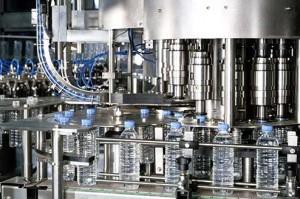It’s what’s on the outside that matters!
Packaging plays a key role in the beverage industry. While it’s the least expensive part of the marketing mix, it’s one of the most essential – and for good reason. A well-designed package captures attention, builds brand awareness and consumer preference, helps us decide what to buy and enhances your products’ presence on the global market. But there’s more to packaging than shelf appeal. Beverage packaging performs a number of critical functions, like:
- Preserving taste

- Protecting and extending product shelf life
- Preventing spoilage, contamination and misuse
- Helping reduce transportation and handling costs
- Conveying important product information to consumers
- Improving consumer convenience
Tackling waste is a priority
Despite the important role it plays, the value of beverage packaging is a paradox. On one hand, it’s essential to delivery and consumer satisfaction. On the other, once emptied, packages are considered waste. As a result, packaging appeal isn’t enough. Packages must also be sustainable – from idea to shelf to disposal.
Sustainable packaging is usually part of larger environmental efforts that include water stewardship, energy-efficient manufacturing, responsible sourcing, and eliminating landfill waste. The new vision is to implement strategies that prevent waste over the life of a package. That might mean eliminating raw materials from the process chain, designing packages that are made from recycled materials, advancing recovery programs and educating consumers to recycle. As environmental sustainability becomes more important, making that vision a reality will be every bit as essential to success as package design.
According to a study by the Grocery Manufacturers Association, food, beverage and consumer packaged goods (CPG) manufacturers will cut some four billion pounds of waste from packaging by 2020. This will result from a variety of efforts – cutting down on the volume of materials in the packaging and the process, using more sustainable materials, using packaging that degrades faster, and reducing the amount of water and energy it takes to get products to consumers.
What is sustainable packaging?
Today, packaging is the single largest generator of waste in the United States. As a result, it’s expected to replace cost as the leading challenge for the packaging industry over the next 10 years, according to a 2012 Survey of Future Packaging Trends.
Safe, effective and beneficial, sustainable packaging meets market criteria for performance and cost and is sourced, manufactured, transported and recycled using renewable energy. Ideally, it’s made of renewable or recycled source materials engineered for efficiency and can be recovered or recycled for use in biological or industrial cradle-to-cradle cycles.
Sustainable packaging reduces packaging weight and volume, improves efficiencies and reduces waste. The challenge is striking the right balance with packaging solutions that are both eco-friendly and fulfill their primary purpose: protecting goods in transit.
Green business is good business
Consider the bottled water category. Despite impressive growth, one of the biggest challenges manufacturers face is pressure from environmental activists. Savvy manufacturers are tackling the issue by light-weighting bottles – the weight of water bottles has dropped by 30 percent in recent years from 12 to 8 grams.
A major soft drink manufacturer took a different route, introducing a water bottle made of renewable materials. Some 30 percent of the raw materials used to make the bottle come from plant-based materials like sugar cane juice, molasses, sugar beets and corn. As the technology is refined, the company envisions a day when the bottles are 100-percent made of plant-based materials. In its first two years, the bottle saved the equivalent in annual emissions of more than 100,000 metric tons of C02. Ultimately, it’s expected to eliminate carbon emissions equivalent to burning three million barrels of oil annually.
Likewise, a major spirits manufacturer sells rum in bottles crafted with both beauty and nature in mind. The bottles weigh almost a third less than they did a few years ago, simplifying shipping and lowering emissions. Like bottled-water makers, the company lightweights bottles. In fact, since 2006, the company has reduced the weight of brand portfolio packaging by more than seven percent – the equivalent of taking 1,100 full truckloads off the road.[1]
These are just a few of the successes beverage makers are uncapping by adopting sustainable packaging practices.
[1] Source: Beverage World article, August 6, 2014: http://www.beverageworld.com/articles/full/16729/bacardi-bottles-are-lighter-adding-to-sustainability-goals

